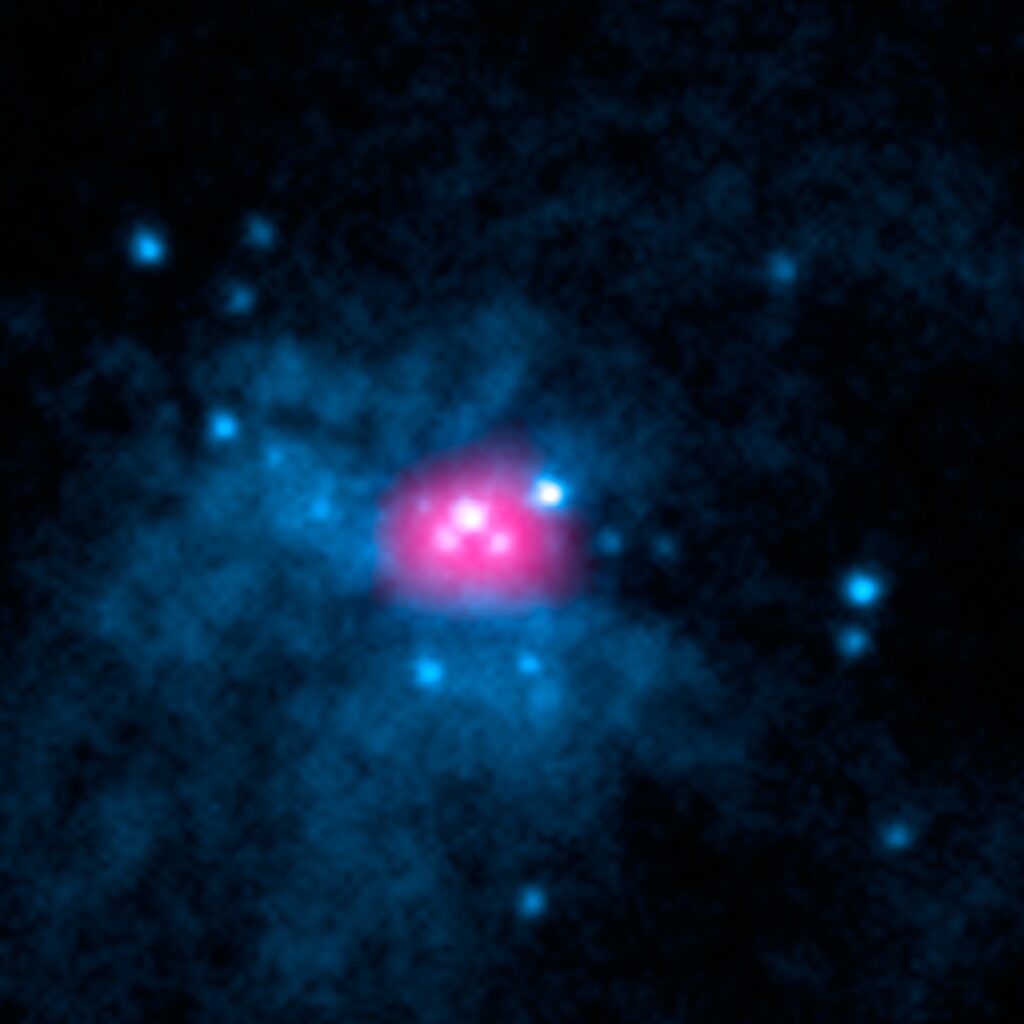Recent observations have confirmed the existence of an ultra-bright cosmic cosmic object so bright that it defies laws of physics.

Table of Contents
A Cosmic Anomaly
Watch it as a video instead of reading:
This neutron star, known as M82 X-2, defies the Eddington limit by collecting 1.5 Earths’ worth of material each year, leading to its off-the-chart brightness. In this article, we will explore the unique properties of M82 X-2 and the implications of this discovery for our understanding of the universe.
Astronomers discover hundreds of ancient, invisible structures at our galaxy’s center
M82 X-2: A Cosmic Object So Bright That It Defies Laws of Physics
M82 X-2 is a neutron star located in the M82 galaxy. Neutron stars are the remnants of massive stars that have undergone supernova explosions, packing more mass than the Sun into the size of a city. Among neutron stars, M82 X-2 stands out as an ultra-luminous X-ray source (ULX). These extreme objects are believed to be either extremely massive black holes or intermediate black holes.

M82 X-2’s brightness is so extreme that it defies the laws of physics, breaking the Eddington limit, which is the theoretical maximum luminosity that a star can have without being torn apart. This has puzzled scientists, who have only detected four such objects so far.
Summary
M82 X-2, an ultra-luminous X-ray source (ULX), resides in the Messier 82 (M82), also known as the Cigar Galaxy, approximately 12 million light-years away from Earth. It is a cosmic object so bright that it defies laws of physics. Discovered by NASA’s Nuclear Spectroscopic Telescope Array (NuSTAR), M82 X-2 has gained attention due to its extraordinary luminosity, emitting X-ray light at a level far beyond what was previously believed to be the maximum limit for an accreting neutron star.
This cosmic object so bright that it defies laws of physics meaning it defies the Eddington limit, a theoretical boundary that defines the maximum luminosity a celestial body (like a star) can achieve when balance is reached between the force of radiation acting outward and the gravitational force acting inward. Emitting energy at levels tens of times higher than this limit for a neutron star, M82 X-2 challenges traditional astrophysical theories.
Notably, M82 X-2 has been categorized as a “pulsar,” which is a highly magnetized, rapidly rotating neutron star that emits beams of electromagnetic radiation. Pulsars are typically identified by their periodic pulses of emission at X-ray and radio wavelengths.
The discovery of M82 X-2, along with similar objects, has sparked significant discussions among astronomers and astrophysicists. These objects provide valuable opportunities to understand more about the formation, evolution, and fundamental physics of neutron stars and black holes.
Cyclotron Resonance Scattering: A Clue to M82 X-2’s Behavior
M82 X-2’s violent behavior and immense brightness raise several questions. Researchers from the California Institute of Technology, led by Murray Brightman, have been examining Chandra X-ray Observatory’s data on ULXs to uncover more information about M82 X-2. They have discovered cyclotron resonance scattering within ULXs, which adds to the complexity of these objects.
This phenomenon occurs when charged particles spiral around magnetic field lines, leading to the emission of X-rays. The detection of cyclotron resonance scattering suggests that M82 X-2’s intense magnetic field could alter the shape of its atoms, allowing the star to remain intact despite breaking the Eddington limit.
Implications and Future Research
M82 X-2’s properties have significant implications for our understanding of astrophysics. Its extraordinary brightness and defiance of the Eddington limit challenge the current laws of physics, hinting at the need for a revised understanding of the cosmic object so bright that it defies laws of physics.
Future research will undoubtedly expand our knowledge of the universe, as scientists continue to study M82 X-2 and other ULXs. NASA’s NICER telescope, which collects data from the International Space Station, plays a crucial role in helping researchers gain insight into neutron stars and objects like M82 X-2.
As our understanding of the cosmos continues to evolve, M82 X-2 serves as a reminder that there is still much to learn about the universe. The study of this enigmatic cosmic object so bright that it defies laws of physics i.e. its defiance of the Eddington limit paves the way for new insights and potentially transformative discoveries in the field of astrophysics.
Reference(s):
Research Paper: The Astrophysical Journal

